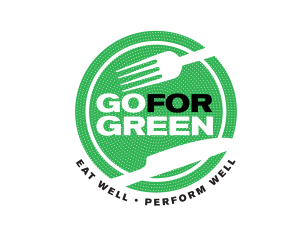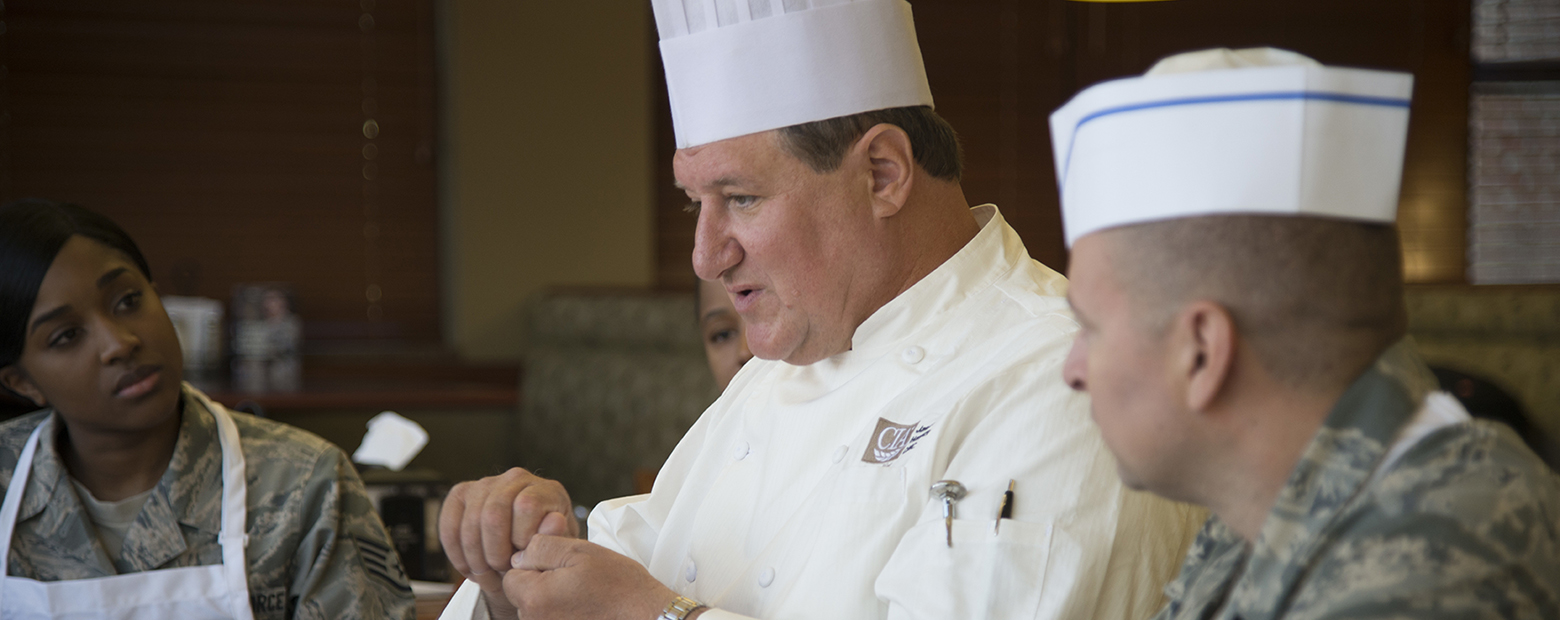Go for Green: The U.S. Air Force’s Color-Coded System for Balance and Nutrition
 Human Performance Optimization is a serious business at the United States Department of Defense – especially when it comes to food.
Human Performance Optimization is a serious business at the United States Department of Defense – especially when it comes to food.
For Bill Spencer, Chief Air Force Food & Beverage Division, it’s a mission. When the U.S. Air Force began roll-out planning for Go For Green (G4G) 2.0 in 2017, they sought to enhance performance by making their airmen not only feel good, but feel good about it. This meant responding to increasing requests for vegetarian, gluten-free, and whole grain dishes and making them delicious as well.
Originally launched in 2008, G4G features a stoplight color-coded rating system (green, yellow, red) to indicate the health and performance level of menu, snack, and entree items, and which should be eaten more or less often. Rankings are based on nutrition research and designed for the “unique environment of the military community.”
In late 2017, the Air Force contracted with the CIA to 1) review and revise G4G 1.0 recipes for compliance with G4G 2.0 standards, 2) create a 28-day cycle menu with existing, revised, and new recipes, and 3) introduce the new menus at Dining Facilities (DFACs) at six bases in the United States, Europe, and Japan.
Early in the process, specific target areas to support roll-out were identified as staff training, purchasing, and fresh produce. DFACs are generally laid out into main food hot lines and snack lines serving all dayparts, with a salad bar at lunch and dinner and fruit and cereal bar at breakfast. In response to Spencer’s goal of providing an overall balanced nutritional perspective, all three components received Menus of Change makeover recommendations featuring reengineered recipes plus 96 new CIA dishes.
The first stage of the project saw the salad bar relaunched as the Pure Food Bar, featuring a rotating daily selection of whole grain salads, plant-based protein items and other flavorful, healthy and satisfying ingredients such as California Vegetable Slaw; Roasted Vegetable Salad with Pesto; Quinoa and Bean salad; and Jerk-, Curry-, and Thai-flavored Chicken. An abbreviated version called the Breakfast Pure Food Bar was used to upgrade the morning fruit and cereal bar, and featured a variety of fresh fruits, several low-fat yogurts, homemade granola, toasted nuts and seeds, natural almond butter, ground cinnamon and nutmeg, honey and a Swiss Bircher Muesli.
To ensure a successful rollout to six bases in the US, Germany, and Japan, the CIA created a comprehensive G4G 2.0 Implementation Course Guide Book detailing the plan, daily prep lists, recipes, glossary, food placement maps, and marketing materials. CIA partners trained airmen on the new standards, requisite culinary skills, daily bar setup and execution, and bulk production of stocks, dressings, salads, and mixes.
Thanks to the interest the Pure Food Bar generated among diners, elements such as vegetable and grain cookery have begun to infiltrate the other DFAC platforms.
At Your Service
Contact us to access our 80 years of food intelligence, and turn our thought leadership into your reality. Simply fill out our contact form and a CIA consultant will get right back to you.
If you’d rather talk in person, give us a call at
845.905.4423

